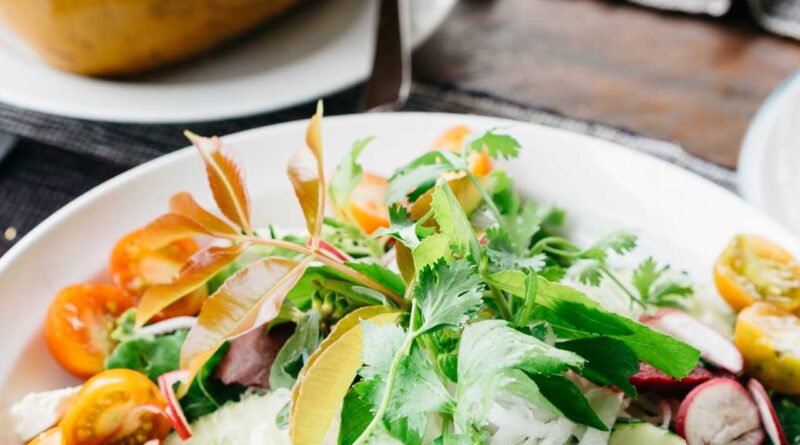Lifestyle Tips
HEALTH
Lifestyle Tips to Lower and Prevent High Blood Pressure
by Megan Betancourt
 High blood pressure, also known as hypertension, is a common condition where the force of blood pushing against the walls of your arteries is too high. Since there are not many signs and symptoms of having hypertension, many people find out they have it after having their blood pressure measured at the doctor’s office or by measuring it themselves. Unfortunately, even though there are no symptoms, over time, high blood pressure can cause damage to important organs, including your heart, brain, and kidneys. This is why it is important to take measures to lower your blood pressure. Although many times people take medications to lower their blood pressure, the first step is to make small changes in your everyday life that can have a big impact. These changes can not only help you lower your blood pressure if it is already high, but they can also prevent you from getting hypertension in the future.
High blood pressure, also known as hypertension, is a common condition where the force of blood pushing against the walls of your arteries is too high. Since there are not many signs and symptoms of having hypertension, many people find out they have it after having their blood pressure measured at the doctor’s office or by measuring it themselves. Unfortunately, even though there are no symptoms, over time, high blood pressure can cause damage to important organs, including your heart, brain, and kidneys. This is why it is important to take measures to lower your blood pressure. Although many times people take medications to lower their blood pressure, the first step is to make small changes in your everyday life that can have a big impact. These changes can not only help you lower your blood pressure if it is already high, but they can also prevent you from getting hypertension in the future.
One of the best strategies to prevent and lower high blood pressure is to eat a healthy diet. The DASH (Dietary Approaches to Stop Hypertension) diet was developed to provide nutritional goals for an ideal diet that is likely to lower blood pressure and LDL (“bad”) cholesterol, which are the two main risk factors for heart disease. This plan has four main recommendations. First, it recommends eating 4-5 servings of fruits and vegetables and 6-8 servings of whole grains each day. Examples of whole grains include brown rice, oatmeal, popcorn, and whole-wheat bread. Second, it recommends including fat-free or low-fat dairy products, fish, poultry, beans, nuts, and vegetable oils for ~2-3 servings. Third, it recommends limiting foods high in saturated fats, such as fatty meats, full-fat dairy products, and tropical oils. The last recommendation is to limit sugar-sweetened beverages and sweets. An added part to the DASH diet is to limit salt intake to 2,300 mg per day, which is about one teaspoon of salt. Studies have shown that adults who follow the DASH diet without changing their salt intake can lower their blood pressure within weeks and can have even greater reductions if they decrease their salt intake.
Besides eating a healthy diet, there are also several other ways that you can lower and prevent high blood pressure. First, maintaining a healthy weight can reduce the risk of high blood pressure and losing weight to stay in a healthy weight range can lower high blood pressure if already present. Calculating body mass index (BMI) with online calculators, which uses height and weight, can be helpful in determining if you are in a healthy weight range, which is a BMI between 18.5 – 24.9. Quitting smoking, drinking no more than 1 alcoholic drink/day, and getting enough sleep are also helpful strategies in lowering blood pressure.
For more information, visit the CDC website: https://www.cdc.gov/bloodpressure/prevent.htm
Photos of the plate with food and a nurse taking blood pressure from Pavel Danilyuk and Markus Winkler from pexels
References:
“Facts about Hypertension.” CDC (Centers for Disease Control and Prevention). Updated 27 September 2021. https://www.cdc.gov/bloodpressure/facts.htm
“About High Blood Pressure.” CDC (Centers for Disease Control and Prevention). Updated 18 May 2021. https://www.cdc.gov/bloodpressure/about.htm
“Prevent High Blood Pressure.” CDC (Centers for Disease Control and Prevention). Updated 24 February 2020. https://www.cdc.gov/bloodpressure/prevent.htm
“DASH Eating Plan.” NIH (National Institutes of Health). Updated 29 December 2021. https://www.nhlbi.nih.gov/education/dash-eating-plan
“NIH-supported DASH diet tops rankings for ‘heart-healthy’ and ‘healthy eating’.” NHLBI (National Heart, Lung, and Blood Institute) News. 4 January 2021.

Megan Betancourt is from Rochester born to Puerto Rican parents. She graduated from the University of Rochester with degrees in Molecular Genetics, Chemistry, and Spanish. During that time, she studied abroad in Ecuador, completing a language immersion program to improve her Spanish. She then went on to medical school at the University of Rochester and participates in the “Latino Health Pathway,” which teaches students medical Spanish that they can use with their patients. She is also a member of LMSA (Latino Medical Students Association) and has helped develop Belton Health Center, a free clinic for minorities in Rochester. She is interested in pursuing internal medicine for her future career.


